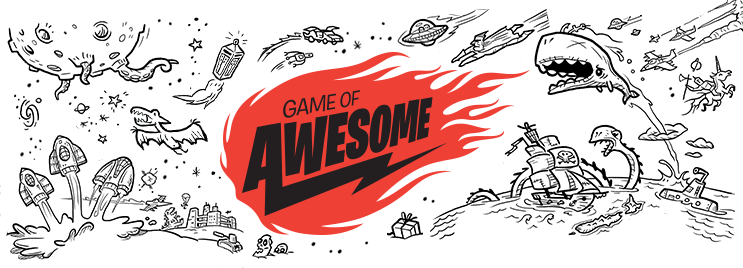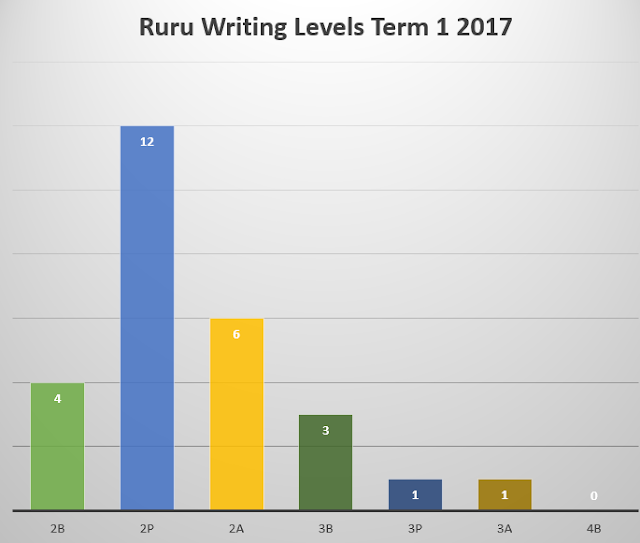INQUIRING QUESTION
How does implementing
Sheena Cameron’s oral language strategies in the classroom raise student
achievement within my target writing group?
With the initiation of the Community of Learners it was clear there would be a focus and direction around oral language. Across the school our inquiry was to be geared around how we implement Oral language and how our specific teaching practises in this area have influenced the students' writing progress. I had used Sheena Cameron's writing resource in my class to great success and with her new oral language resource out, I really wanted to implement them in my literacy class. It was only fitting that I base my inquiry around her resource and activities she had created and collected.
SO WHAT IS ORAL LANGUAGE?
Oral Language is speaking to to express one's understanding/knowledge/feelings.The average child learns between 2000 and 3000 words every year during their school years.
A student needs 12 instructional encounters to fully know a word.
A student needs 12 instructional encounters to fully know a word.
MY TARGET STUDENTS
This group is a year 5/6 boys who are writing at a level below National Standard. My target is to accelerate their progress throughout the year through deliberate acts of Oral Language teaching.
Oral language lays the foundation for the reading and writing skills children will develop as they enter and progress through school. They will use oral language in all aspects of their education, in the classroom as they connect with their peers and teachers, and throughout their lives as they grow into adulthood. Having a solid foundation in oral language will help children become successful readers and strong communicators as well as build their confidence and overall sense of well-being.
WORD CIRCLE
The purpose of this oral language activity was to generate words on a specific topic. I arranged the literacy class in a circle and give them a topic eg 'House' The idea was to throw the ball to someone in the group and they would respond with a one word answer such as door, garden etc.
I was really impressed with what words the children would come up with. It also provided an opportunity for other students to have new words defined by their peers. eg Insulation - .
We started this in term 1 and I really noticed active listening for if you said a word which had been said you would have to sit down. It gave an audience to my quieter children and ESOL students.
I noticed that after playing the game before Read & Feed a child who would not choose to speak in front of our class volunteered to say the Karakia. This really spoke volumes as they could see our class was so supportive in the game that it could be transferred to other situations
I will provide a video of us using this game for our Wearable Arts.
ADVERB WALK
As part of our Word Work in Daily 5, we have started using Mad Libs. The kids love sharing what they came up with and I didn't have to spend to much teaching time on what a Verb, Noun, Adjective was. However, when it came to adverbs I found the children really struggle on this one. It just so happened there was a specific activity in the OLB which focused on adverbs. The activity, (Like most) was relatively simple; The children would walk around the class quietly and using a list of adverbs I would call out one and they would need to walk in that manner. eg 'Bravely'.
It was very successful the children built up a bank of adverbs which could be used in their Word Work and writing while having fun showing what it looked like. If the students didn't know the adverb such as 'vivaciously' a more able writer would use a Chromebook to search its meaning and we would try and show it in our walk.
It was a wonderful activity one which I will revisit - didn't need much in the way of resources and I am starting to see experiments of adverbs in their writing.
CHARADES
The class found it quite tricky to communicate with one another without talking. They used acting, facial expressions and body language to communicate our Charade. We completed these for a few weeks before Read & Feed. The class would come in from Maths really excited to not only be the one up front but also participate by trying to guess what their peer was acting. I was really impressed with my ESOL students and shy students whom although you could see this was hard for them. It gave them an opportunity to communicate outside of their comfort zone.
The class would love it if no one could guess the answer because it was then up to Mr Hurly to try and act it out to both teams.
So how does this help?
It was a game which challenged people.
It gave opportunities to generate synonyms within the class
The students are active and collaborative and they tap in to their prior knowledge and experiences.
CREATE A COMMERCIAL / SELL IT
A very fun writing/Oral language activity. During our persuasive writing unit it was beneficial to have fun within our instructional writing time. I could, and I did spend a lot of time teaching the structure, the purpose and useful sentence starters for persuasive writing. However it was important to have a 5 minute quick write and sell it! Students would create a persuasive commercial on something mundane and insignificant and then have to sell it to the class. The items they would sell included an old orange peel or a brown leaf. We looked at some commercials and discussed how they use emotional language, comparisons and words to make you think you can't live without the item. I then gave them 5 minutes to write it and then present it as a commercial to the class. I was blown away with some of the language they incorporated into their presentation.
BARRIER GAMES - CALL A FRIEND
We began this activity first thing in the morning in our Whanau class. The idea is that students sit back to back and mime holding a phone while talking to their buddy. I had the class focus on discussing what they did when they had finished the school day. When the students shared with the class it was clear that they weren't finding out more information. An example was one student reported that his friend played PlayStation, however if the buddy had asked more questions we would have learnt what game they played, who they played with and why.
The whole class would do this activity at the same time so it was naturally loud. The purpose was to not only speak clearly and find more information but also listen to the speaker as they would be quizzed on it at the end of each activity. As we developed this the students would choose different partners and be excited to start the exercise.
MID YEAR REFLECTION
An oral
language focus is having a positive impact for all my students - Not just those
identified in my target group. I am finding students are incorporating new vocab that they came across in the speaking and
listening process. The students are starting to utilise these in their writing.
My ESOL student
in my target group is now able to discuss elements of his writing and is able
to identify areas to work on. I have been encouraged by the confidence he and others have built due to what I believe is thanks to the nature of many of the oral language activities.
THE GAME OF AWESOME
My target group has also been building on their writing and oral language skills by playing 'The Game of Awesome' They have completed this with our teacher aide and are enjoying discussing and sharing these ideas. This resource was produced to raise success in boys so it is particularly useful to my Target group.
'Game of Awesome is a card game for 3-6 players designed to engage and inspire kids, specifically boys, to tell stories and learn to write. Playing the game helps students generate ideas quickly which they can explore, expand and write stories.
The basic game has been produced as four sets of cards containing topics, themes and ideas that students years 5-8 will find interesting, involving and often ridiculous! The cards can be used independently or mixed and matched to create new combinations and infinitely more ideas.'
HOW MY TARGET STUDENTS PROGRESSING - MID YEAR
MID YEAR REFLECTION
My ESOL student
in my target group is now able to discuss elements of his writing and is able
to identify areas to work on. I have been encouraged by the confidence he and others have built due to what I believe is thanks to the nature of many of the oral language activities.
THE GAME OF AWESOME
My target group has also been building on their writing and oral language skills by playing 'The Game of Awesome' They have completed this with our teacher aide and are enjoying discussing and sharing these ideas. This resource was produced to raise success in boys so it is particularly useful to my Target group.
'Game of Awesome is a card game for 3-6 players designed to engage and inspire kids, specifically boys, to tell stories and learn to write. Playing the game helps students generate ideas quickly which they can explore, expand and write stories.
The basic game has been produced as four sets of cards containing topics, themes and ideas that students years 5-8 will find interesting, involving and often ridiculous! The cards can be used independently or mixed and matched to create new combinations and infinitely more ideas.'
HOW MY TARGET STUDENTS PROGRESSING - MID YEAR
SPEECHES
In term 3, our literacy class was to present a speech to their peers. The children had a booklet to utilise for writing different sections of their speech. They utilized ICT to find examples of good and not so good examples of speeches. Speeches are ....Oral Lang Book
During our oral language activities, all these essentials would be regularly addressed. I was really impressed with how the students were motivated to spend time writing and re-crafting their own speeches. I believe their appreciation of oral language which has built up over the year helped motivate the class.
Speeches clearly integrate oral language and writing. Speech writing is the art of writing a speech for public presentation. There are certain things the students needed to keep in mind - flow, the ability of the audience to understand you, who your audience is, time limits, and being able to get your point across the first time through.
What was so rewarding was to hear some ESOL students present a speech longer than 2 minutes to an audience of their peers. Many of these ESOL children struggled to string a sentence together early in the year and now, with extra oral language strategies implemented in my teaching I have seen a great improvement.
After writing an introduction - time to put it into practise.
USING DRAMA TO ENHANCE ORAL LANGUAGE
'A the centre of all drama is communication'
-Matt Buchanan
READERS THEATER / PLAYS
HOT SEATING
If we really want students to understand characters as they appear in texts, we need them to metaphorically walk in the shoes of those characters or get into the skin of the characters. After having read the text(s) students pose as a character they have encountered and having other students question them about their actions and motivations from the text, will make the student in the persona of the chosen character think more deeply about why he/she acted the way he/she did and deepen the understanding of that character for those asking the questions







No comments:
Post a Comment